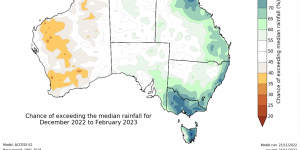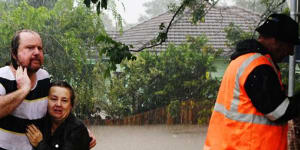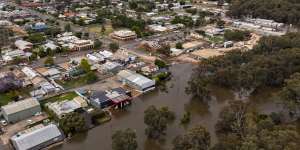The Bureau of Meteorology that any significant rainfall could lead to more widespread flooding over the summer. It pointed to an increased risk in coastal areas around January 23 and February 20 in particular,when unusually high tides are expected.

A map showing the chances of rainfall above the median over summer.Bureau of Meterology
Much of NSW has been battling floods for months. Significant rainfall in the Lachlan basin earlier this month,including in Forbes,Condobolin and Eugowra.
The water in the swollen Lachlan River is now making its way downstream and into the Murray River. Residents of Mildura,in north-west Victoria,were.
as a result of this year’s floods,mostly after driving into floodwaters,but people have also lost their lives after becoming trapped in their flooded homes,including in Lismore and Eugowra.
Hundreds of people remain homeless,including in the Northern Rivers,.

People make their way to safety in Lismore on February 28.Elise Derwin
The bureau said the flood risk is not over. La Nina in the Pacific,warmer ocean temperatures around Australia and a positive Southern Annular Mode are to blame for the wet weather.
“In eastern Australia,any significant rainfall has the potential to lead to widespread flooding where rivers are already high,dams are full and catchments are wet,” it said.
“Above-average rainfall also increases the risk of landslides and tree falls in areas of steep terrain and very wet soils.
“The negative Indian Ocean Dipole event is weakening and will likely come to an end by early summer,while the La Niña in the Pacific Ocean may start to ease in early 2023.”

Condobolin tries to keep the water back on November 22.Nick Moir
There was also an increased risk of prolonged heatwaves with higher humidity in southern parts of Australia,as well as an above-average number of tropical cyclones and tropical lows.
Cooler daytime temperatures could also be expected in NSW,southern Queensland and parts of Victoria,the bureau said.
There was a high chance of warmer-than-usual nights in the tropical north and some southern parts of Australia,including Tasmania.
Western Australia is expected to be hotter and drier than usual over the summer.
The National Council for fire and emergency services,AFAC,will release its bushfire outlook next week.
The Morning Edition newsletter is our guide to the day’s most important and interesting stories,analysis and insights..